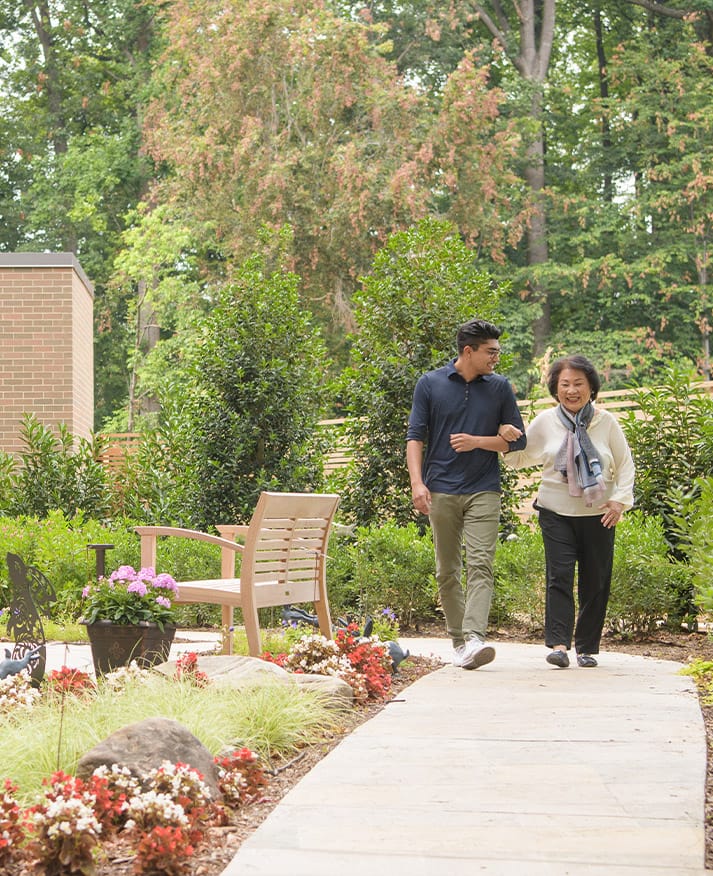Senior Living 101: Demystifying Financial Options and Terminology

Understanding the financial side of senior living can feel overwhelming — but it doesn’t have to be. Whether you’re exploring options for yourself or a loved one, having the correct information can make all the difference. During our recent Senior Living 101 webinar, we discussed key financial options and common terms to help you confidently navigate this journey. Here's a recap of the highlights:
Financial Options in Senior Living
Families often have multiple financial resources to explore when paying for senior living. From insurance benefits to government assistance programs, understanding your options can help you plan confidently. Here’s a look at some of the most common ways to cover the costs of senior living:
1. Long-Term Care Insurance
Long-term care insurance can be a valuable resource for covering senior living expenses, but policies vary widely. While older plans often focus only on skilled nursing care, newer policies may also cover assisted living and memory care. Since coverage details can be complex, it’s important to review your policy carefully and consult with both your insurance provider and a financial adviser to understand what’s included and how to maximize your benefits.
2. Medicare and Medicaid
- Medicare: Medicare covers short-term medical needs, such as hospital stays, rehabilitation, and skilled nursing care after a hospital visit. However, it does not typically cover ongoing assisted living or memory care.
- Medicaid: Designed to assist low-income individuals, Medicaid may cover some senior living costs, but rules vary by state. Many states require a spend-down process, meaning individuals must use their assets to qualify for coverage.
3. Veterans Benefits
Veterans and their spouses may qualify for programs like Aid and Attendance, which reimburse medical expenses, including assisted living or memory care costs. Your local VA office can help determine eligibility and guide you through the application process.
4. Private Pay
Many families use savings, home equity, retirement funds, or investments to cover senior living costs. While private pay may feel overwhelming at first, proper financial planning can help families manage costs effectively. Consider working with a financial planner to explore options like bridge loans, real estate sales, or structured withdrawals from retirement accounts to create a sustainable plan.
Understanding Senior Living Fee Structures
Choosing a senior living community isn’t just about location and lifestyle — it’s also about understanding the financial structure that best fits your needs. Communities typically offer a mix of one-time fees and recurring costs, with models designed to provide flexibility, security, and choice. Here’s what to consider as you explore your options:
- Community Fee: This one-time charge covers shared amenities, operational costs, and apartment preparation. It is typical in rental-based communities and functions similarly to a condo fee in a homeowner’s association, except that it’s nonrecurring.
- Entry Fee (Buy-In): A buy-in or entry fee is a larger upfront payment that may reduce monthly costs or secure lifetime access to a community. Some communities offer partially refundable buy-in plans, which provide additional financial flexibility.
- Membership Fee: The membership fee is a flexible alternative to traditional rental and buy-in models. It allows members to access elevated amenities and services without the significant upfront cost of a buy-in model. It bridges the gap between luxury services and financial flexibility, offering a unique way to enjoy an enhanced lifestyle while maintaining long-term financial security.
- Monthly Service Fee: A recurring cost that covers housing, utilities, dining, activities, and select services. This fee is similar to combining rent, a meal plan, and entertainment expenses into a single predictable payment.
Each senior community may also have additional care costs, which are typically structured in one of the following ways:
- Tiered Pricing: Costs are based on the level of care required (e.g., independent living vs. assisted living vs. memory care).
- Point or Time Systems: Fees correspond to specific services provided, such as medication management or daily assistance.
- All-Inclusive Care: A flat monthly rate that covers all care services, simplifying budgeting for residents and families.
Takeaways and Tips
Understanding senior living financials may take some research, but resources are available to help. Here’s where to start:
- Review your financial options with a trusted adviser or insurance provider.
- Contact your local VA office if you or a loved one are a veteran.
- Ask communities for detailed breakdowns of their fees and services.

As one of the residents mentioned about moving into her senior living community, “I knew that when I came and lived here, it wasn't going to change my life. It was just going to change my location.” With a clear understanding of your financial options, you can find the perfect fit for yourself or your loved one.


